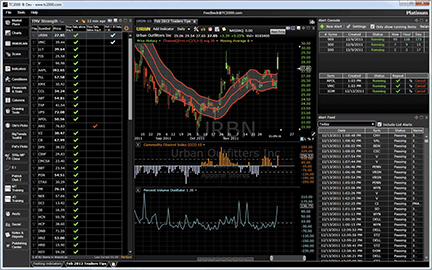Surprise…Technical Indicators Don’t Work
Surprise…Technical Indicators Don’t Work
Jan 14, 2013
Technical Indicators Don’t Work…..How Could They?
- MACD (moving average convergence/divergence) is a technical analysis indicator created by Gerald Appel in the late 1970s
- RSI The relative strength index was developed by J. Welles Wilder and published in a 1978 book, New Concepts in Technical Trading Systems
- Bollinger Bands is a technical analysis tool invented by John Bollinger in the 1980s
- Ichimoku Kinko Hyo – usually just called ichimoku is a technical analysis method that builds on candlestick charting to improve the accuracy of forecast price moves. It was developed in the late 1930s by Goichi Hosoda,
- The Elliott Wave Principle – is a form of technical analysis that some traders use to analyze financial market cycles and forecast market trends by identifying extremes in investor psychology, highs and lows in prices, and other collective factors. Ralph Nelson Elliott (1871–1948), a professional accountant, discovered the underlying social principles and developed the analytic tools in the 1930s.
- Commodity Channel Index (CCI) is an oscillator originally introduced by Donald Lambert in an article published in the October 1980 issue of Commodities magazine
- Vector Vest – In 1978, Dr. Bart DiLiddo, Ph.D. began to create mathematical models that clearly define EXACTLY what causes a stock’s price to rise or fall. No opinions. No guesswork.
The issue is that market vendor revenues are tied to dangling the carrot of hope in front of needy investors. Here is this indicator, here is a new one, and here is yet another one; it is an endless cycle.
Yesterday my partners and I attended a Warden TC2000 seminar in La Jolla, California. We are fans of Warden TC2000. The charting is well done and our two products link to one another allowing users to seamlessly interact between the two products, clicking on symbols in Trade Ideas and updating the charts in TC2000.
We invite you to take a look at how Trade Ideas approaches backtesting and validation of how a strategy is performing in today’s current market conditions. Our backtesting module, The OddsMaker, has a number of unique tools allowing for the immediate visualization and analysis of your strategy’s simulated performance. And our unique Execution Consulting service provides our clients with fully developed and backtested strategies and trading plans with the best chance of producing profit.
To Get Started with Execution Consulting or if You Have Questions:

